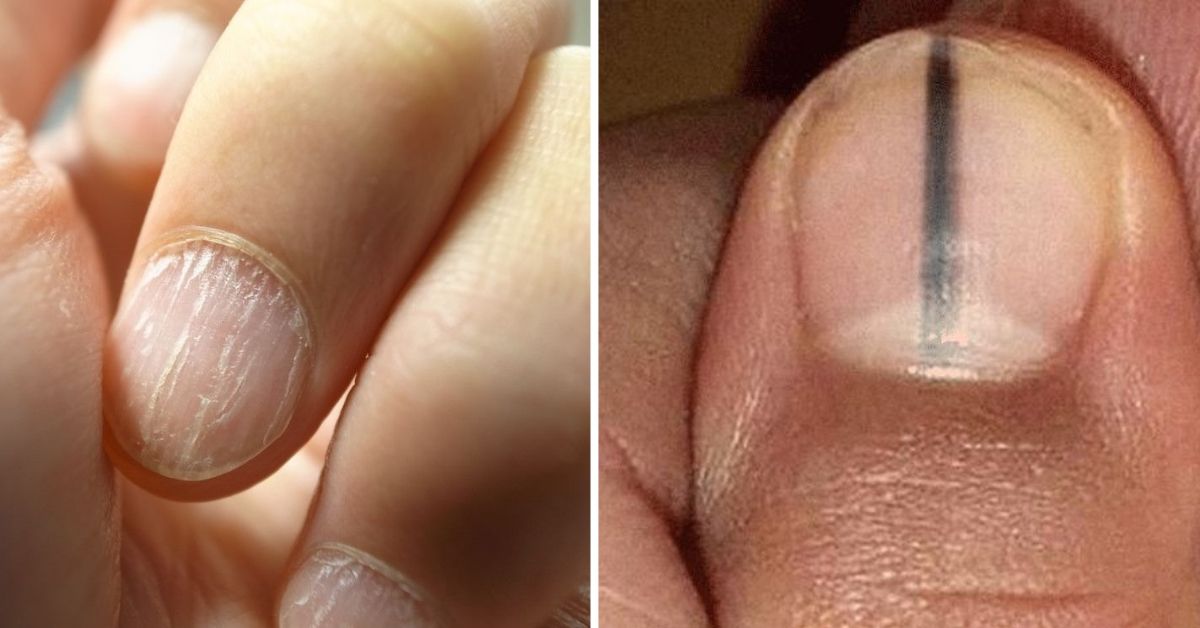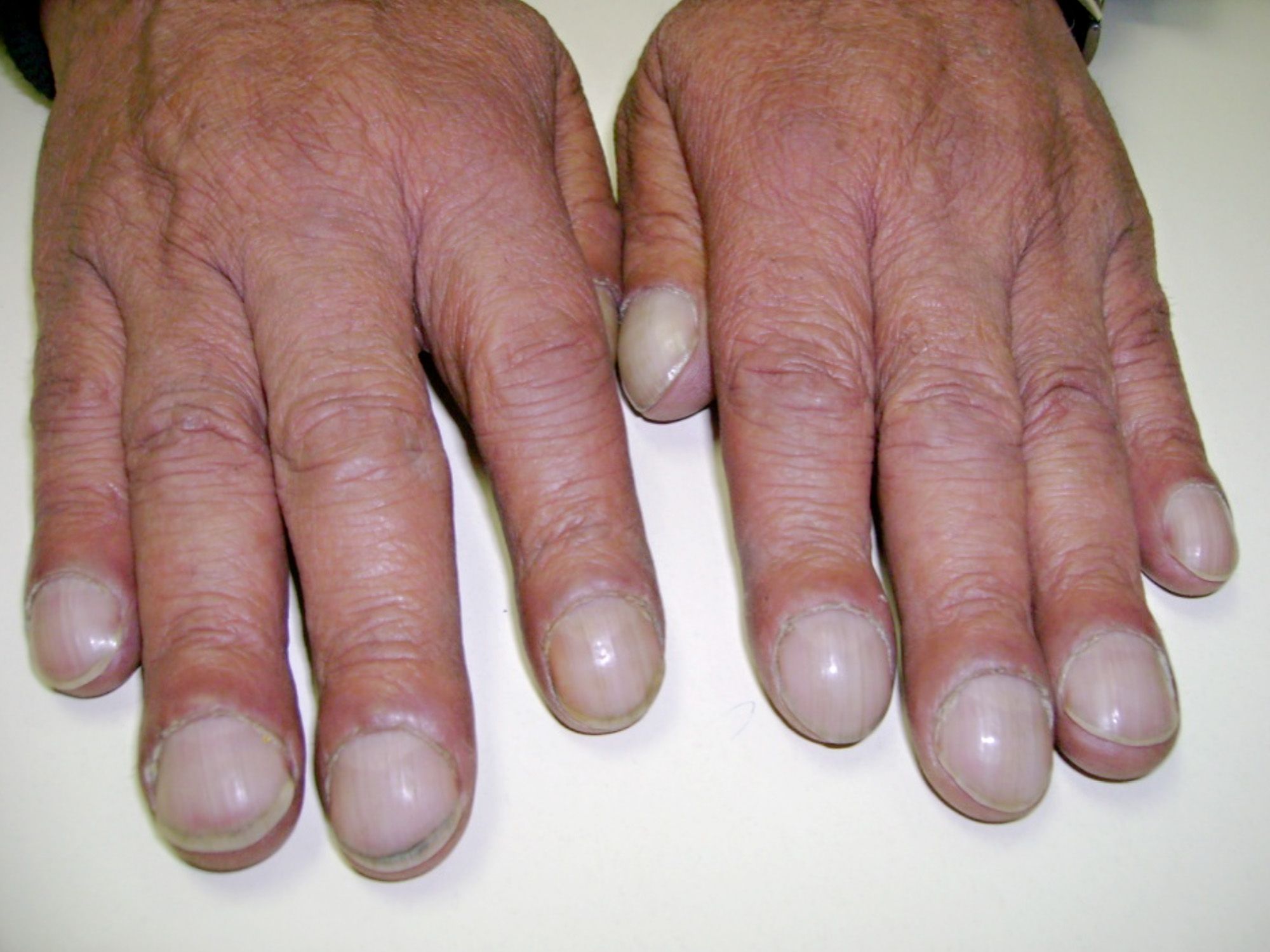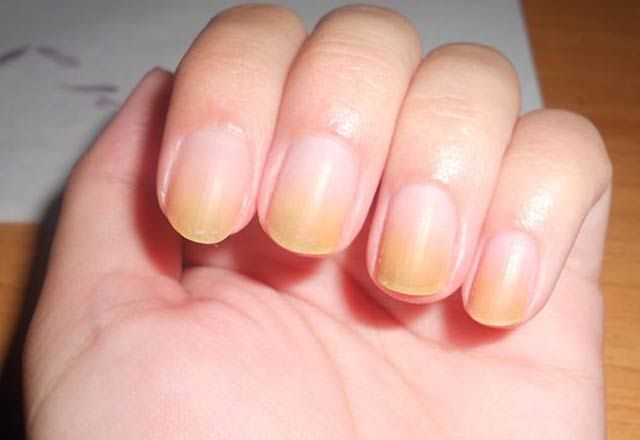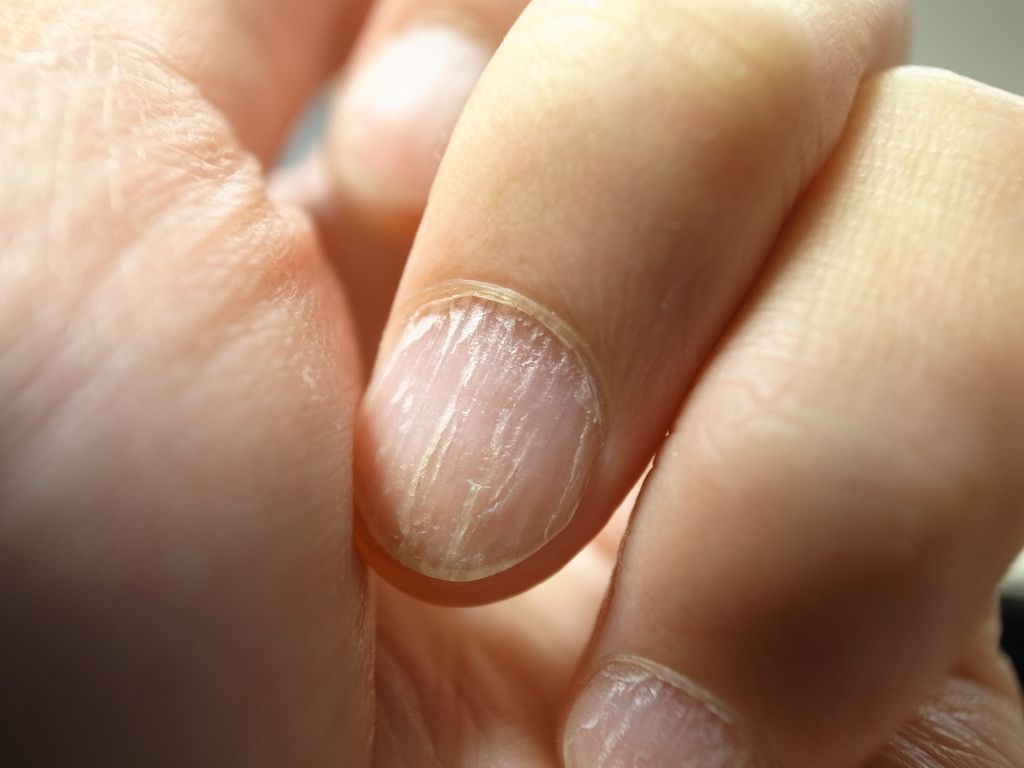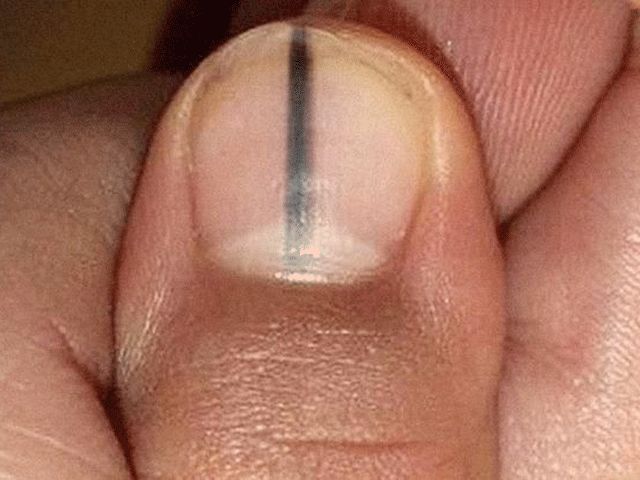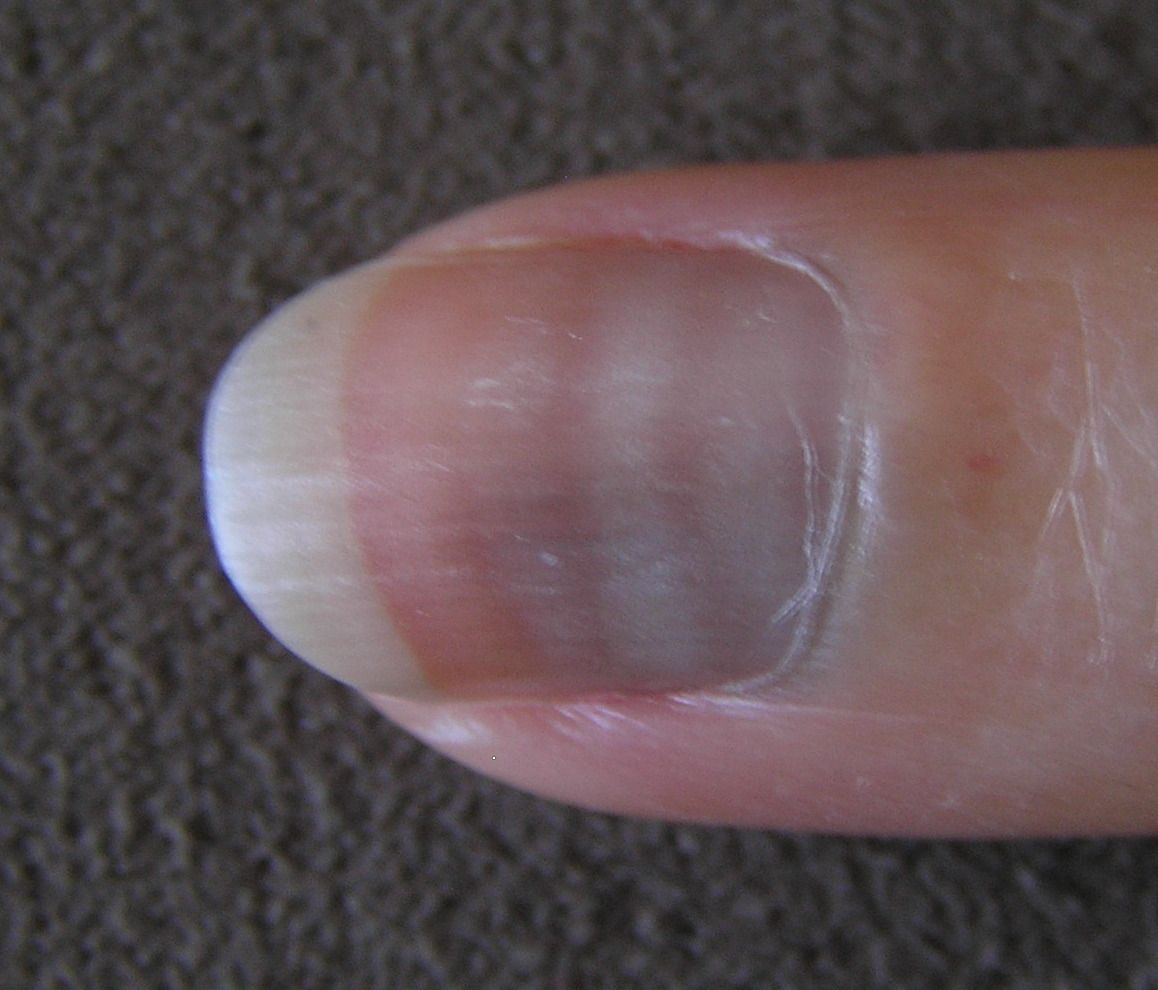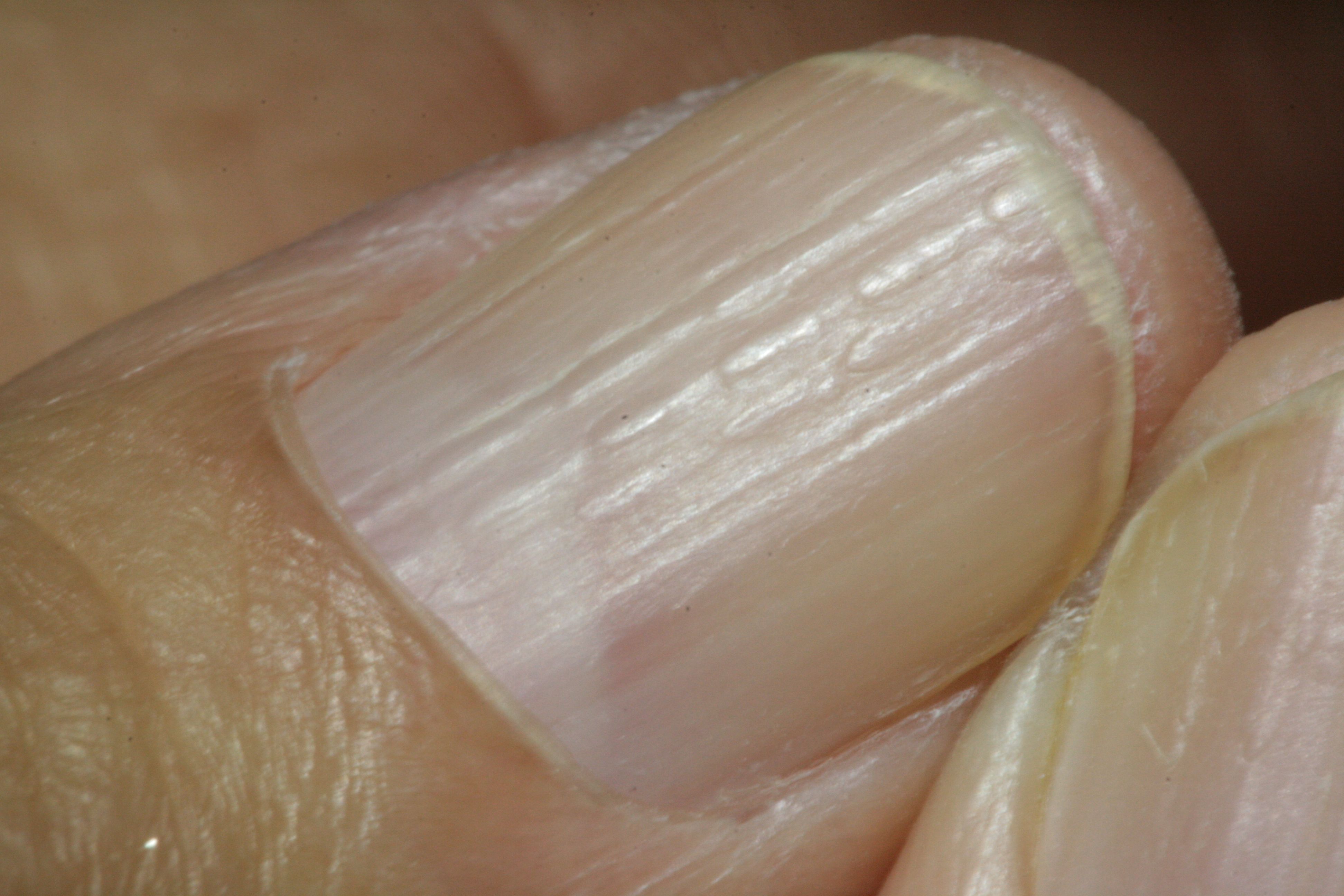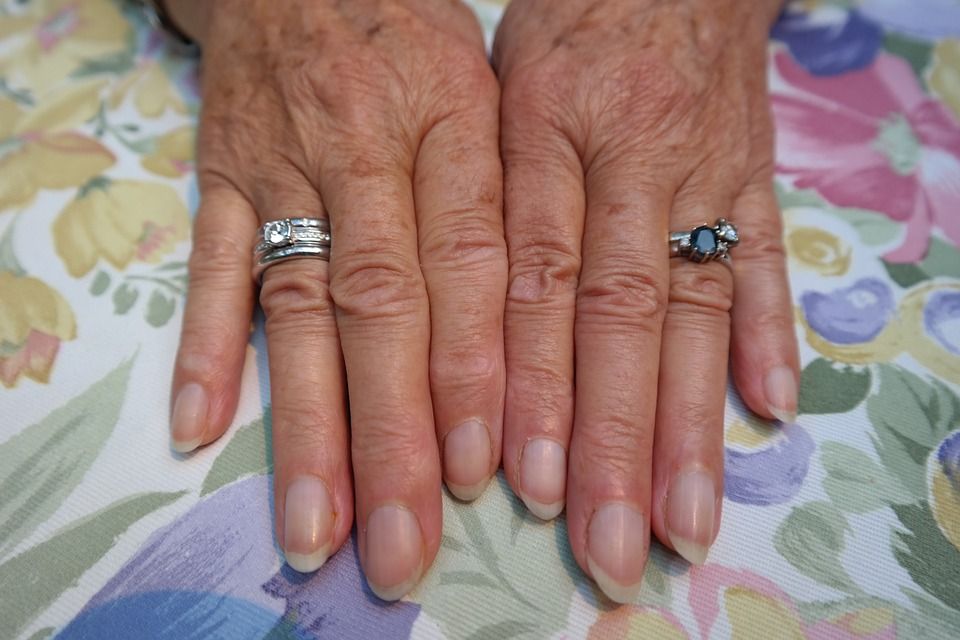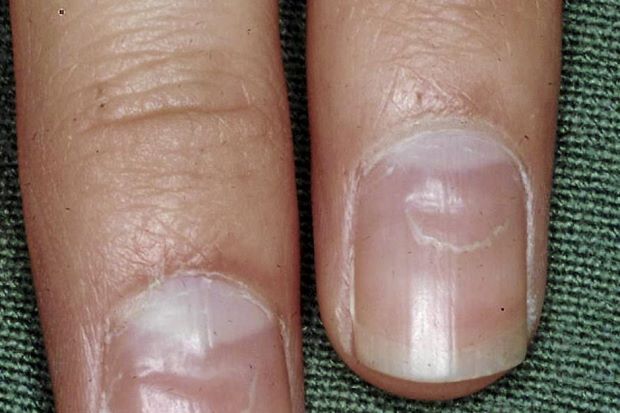If you're like me, you leave it up to your manicurist to take care of your nails every few weeks. I usually don't give much thought to them as they're almost always covered by polish, but I've come to realize that this is a really bad habit.
Our nails are extremely useful in letting us know how well our bodies are functioning.
Changes to their color, shape, size and texture can help us determine when something is wrong with our health, from deficiencies to cancer.
Here are eight things your nails can reveal about your health:
1. Clubbed Nails
Nail clubbing, where your nails and the skin around the cuticle become enlarged and curve around the fingertips (shaped like an upside-down spoon), is often a sign that something may be seriously wrong with your lungs or heart.
You'll have to consult with a doctor to get a proper diagnosis, but according to the Mayo Clinic, nail clubbing is sometimes caused by low oxygen in the blood, lung cancer, emphysema, cirrhosis, liver disease, congenital heart disease, inflammatory bowel disease (IBS), AIDS, or cystic fibrosis.
2. Yellow Nails
If you're someone who wears a lot of nail polish, your nails could became discolored over time. Smokers may also experience this as a side-effect of nicotine, however, there could be a more serious reason why your nails are turning yellow.
In addition to the yellowness, if you notice that your nails are lifting off the nail bed, you might be dealing with a fungal infection.
It could also be a sign of a more severe condition, such as diabetes, lung disease, a thyroid disorder, or lymphedema, which is the build-up of lymphatic fluid in the tissues.
3. Cracked, Brittle or Dry Nails
Most of the time, dry nails shouldn't be a cause for concern as they are caused by a number of external and controllable factors, like frequent use of nail polish remover, especially acetone, harsh detergents, hand sanitizers, and excessive exposure to water.
However, if you take good care of your nails and they still continue to crack and be brittle, it could be an indication of an internal problem, such as a protein deficiency or Rayndaud's disease, or an under-active thyroid, according to Dr. Sandy Skotnicki, associate professor of dermatology at the University of Toronto.
4. Dark Lines
According to Dr. Dana Stern, assistant clinical professor of dermatology at Mt. Sinai School of Medicine, people with darker complexions are more prone to get dark lines on their nails.
Still, she suggests getting it checked by a dermatologist as it could be a sign of melanoma, the most aggressive form of skin cancer.
There's a misconception that this cancer begins in the skin, but Stern warns that it could also start under the nail, specifically in the index finger, thumb and big toe nail.
In addition to a vertical black or brown band, watch out for discoloration in the skin around the nail.
5. White Marks
Those who work with their hands a lot may notice white marks on their nails that form after a trauma, such as banging or breaking of the nails.
However, if the mark resembles a half moon then it could mean trouble. This could be a sign of liver disease as well as a serious kidney condition known as Terry's Nails.
The presence of a single transverse white at the top of your nail is strongly associated with Mees' lines, a condition caused by arsenic, thallium or heavy metal poisoning.
White crescents on the nail could also be a side-effect of chemotherapy.
6. Ridged Nails
Vertical ridges on your nails are not a big deal as they're a normal sign of aging, but if you develop horizontal ridges, you may want to consult with a doctor.
Known as Beau's Lines, horizontal ridges on the nails may be an indication that your nails have stopped growing. They're also a sign of stress and can occur during recovery from a really serious illness during which your nails stopped growing.
According to Standford Medicine, Beau's Lines can be triggered by malnutrition, chemotherapy, and severe infections.
7. Pale Nail Beds
Healthy nail beds should not only appear smooth, they should also have some color in them. If yours appear pale most of the time, chances are you may be anemic.
Anemia occurs when your body isn't producing enough red blood cells and as a result, it can't provide enough oxygen to the blood.
Ask your doctor for a blood test to determine whether or not you will need to increase your iron intake to help your body function better.
Koilonychia, or "spoon nails," is another condition that is caused by an iron deficiency. If you do suffer from this condition, your nail bed will likely be thin and concave, meaning it could hold a drop of water without it rolling off.
8. Pitted Nails
Do you have tiny dents on the surface of the nail? This is known as nail pitting and can happen for a number of reasons.
It is often linked to psoriasis, but can also be a symptom of Alopecia areata, an autoimmune disease that causes the immune system to attack the hair follicles and lead to hair loss.
